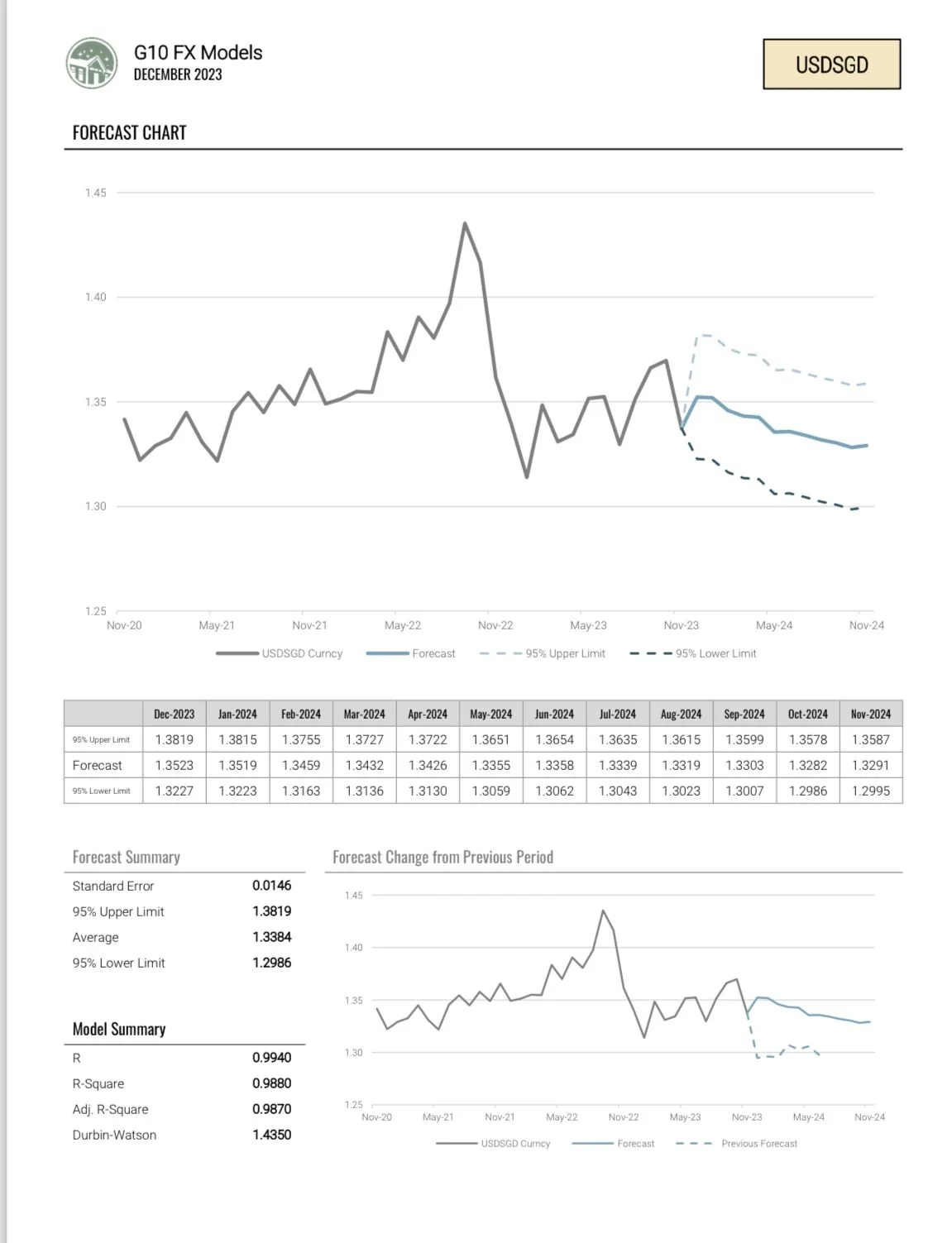26-29 December 2023 Economic Summary:
1. United States (USD)
- Covid-19 Variant JN.1: New variant spreading rapidly, classified as a "variant of interest" by the WHO, posing a low global health risk.
- Housing Market: FHFA House Price Index showed a 0.3% increase in October, with a year-over-year rise of 6.3%.
- Labor Market: Jobless claims increased to 218,000, indicating a cooling labor market.
- AI Developments: Nvidia Corp. introduced a less-capable version of its top graphics product in China due to US restrictions.
2. United Kingdom (GBP)
- Economic Growth: Q3 GDP fell by 0.1%, raising concerns of a technical recession.
- Quantitative Easing (QE) Program Losses: Ex-BOE Michael Saunders commented on potential larger losses for the UK's QE program compared to other central banks.
3. Eurozone (EUR)
- Economic Growth: Expected modest growth in the coming year despite wage increases exceeding inflation for the first time in three years.
4. Japan (JPY)
- Employment: Job-to-applicant ratio dipped to 1.28, pressuring wage increases.
- Industrial Production: November saw a 0.9% decrease, with declines in automobile, IT equipment, and general machinery production.
- Interest Rates: Bank of Japan's Governor Ueda hinted at a potential interest rate increase in 2024.
5. Australia (AUD)
- Mining Sector: Iron miners, including BHP and Rio Tinto, saw advances after a rally in iron prices, indicating positive effects of Beijing's property market measures.
6. AI and ESG Developments
- The New York Times Co. vs Microsoft and OpenAI: A lawsuit over AI development using media content, reflecting tensions in the media-technology relationship.
- Spain: Extension of a windfall tax on banks and energy companies, with tax breaks for green investments.
- Pan-European ESG Funds: Potential for billions in fossil fuel divestments following a French government ruling.
7. Global Economic Outlook
- Inflation and Recession Concerns: Varying inflation rates and recession risks continue to shape the global economic landscape.
- Oil Prices: Decreases in oil prices reflect concerns about weaker economies, particularly in China and Europe.
In summary, while there are indicators that could point towards both a cooling of inflationary pressures and the early stages of an economic slowdown, the data from December 2023 alone does not conclusively confirm an imminent recession or a definitive trend in inflation for the USA. It suggests a cautious economic environment where both factors are closely monitored. The situation would require continuous observation into 2024 for a clearer understanding of the direction of the US economy.

